
Landscape curbing can really improve the look of a yard, but at what cost? Find out how much it costs and the different ways you can do it
Get unstuck from a rock and a hard place with these ideas


Not only do rocks help with drainage and sectioning off a property, but they can be decorative too. They hold up well in both harsh and mild weather conditions and come in various styles, sizes, textures, and colors. Use them in a small section to give your yard a new look or cover a large area to change the flow and functionality of your property.
Whether you’re looking for a quick update or want to transform your yard, these rock landscaping ideas can give your outdoor space a new purpose.
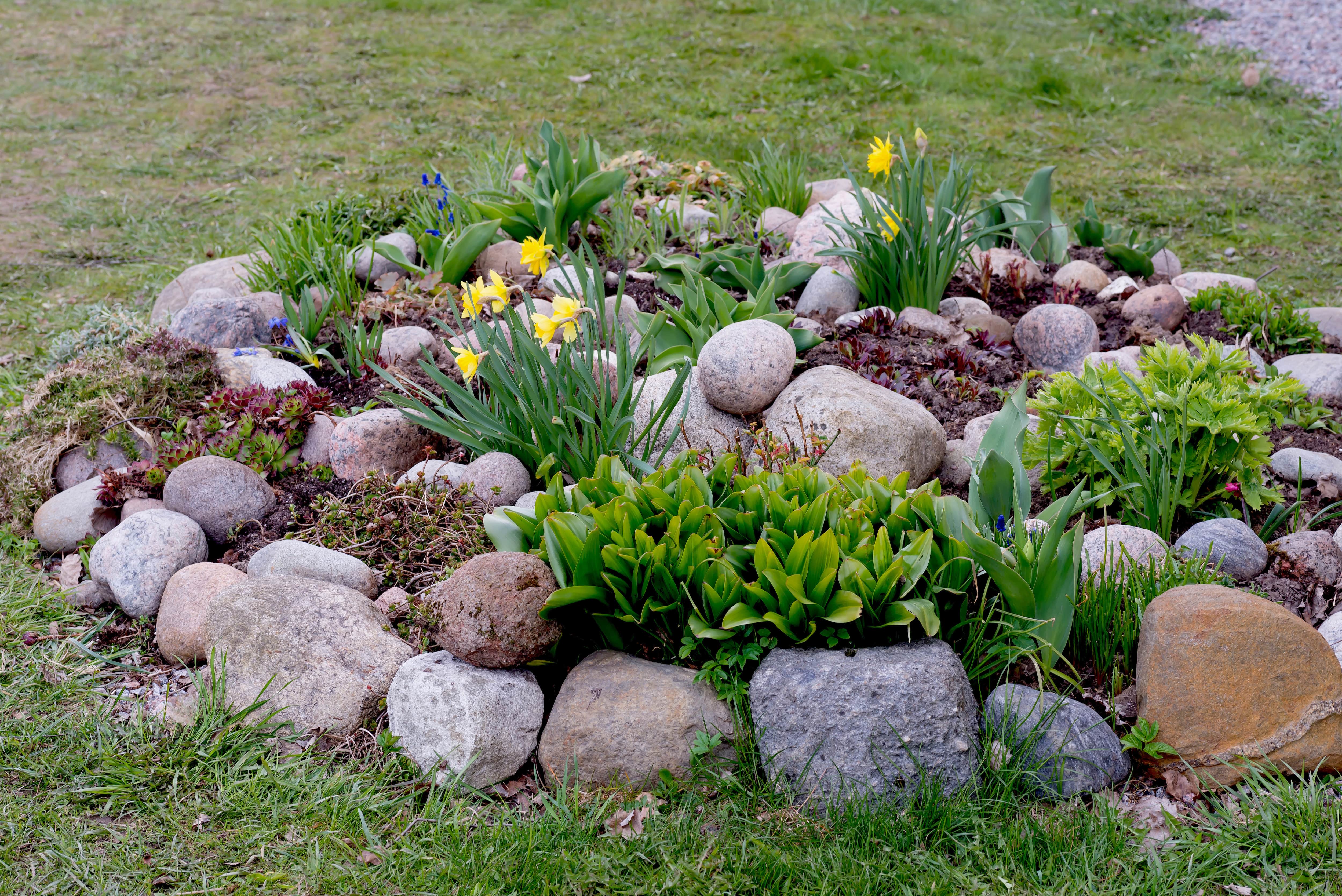
Fill in empty space in your yard by creating a focal point with an arrangement of rocks and flowers. Round stones build up the base of the flower bed, and mulch is used to fill in empty areas. Plant bulbs like lilies and tulips so you can enjoy fresh flowers at the first sight of spring.

Consider some front yard landscaping ideas with rocks when planning your design. Create a stone path to line flowers and bushes using various-sized rocks and stones. Rather than waiting for new grass to grow, you can get instant gratification by placing rocks down to enjoy your newfound curb appeal.
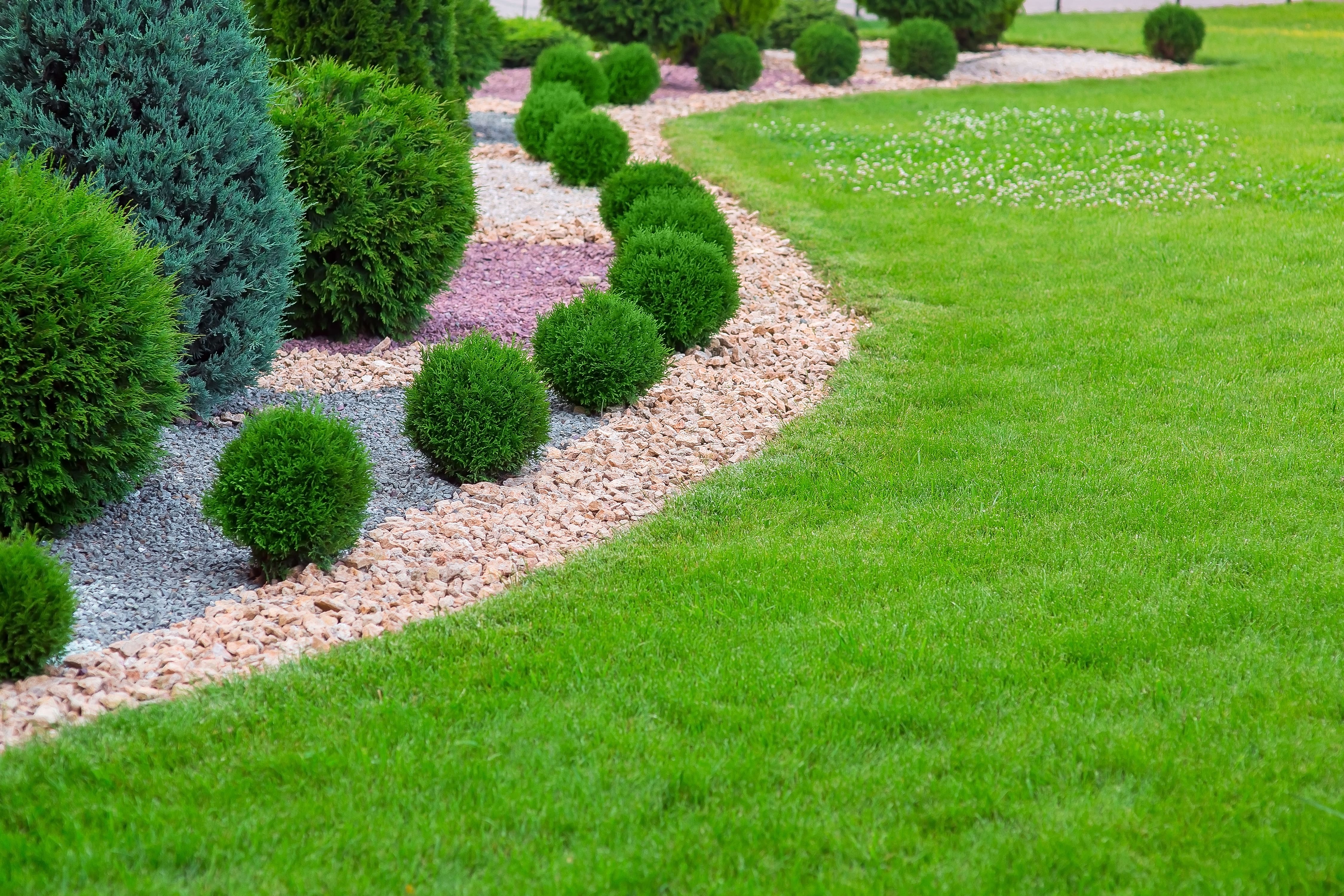
Use rocks instead of mulch in your garden landscaping design. A benefit to using rocks is they are more weather-resistant and don’t need to be replaced every few years. Also, if you line it with weed cloth, you are less likely to have weeds pop through the rocks, taking one of the major hassles out of gardening.

For a rugged look, stack different-sized rocks to make a DIY firepit in your backyard. Place the larger sizes on the bottom for a strong base, then build it up a few feet, filling in empty spaces with small rocks. Then, place loose, heat-resistant stones (such as lava rocks) around the edges so you don’t burn your grass. Arrange wooden Adirondack chairs and benches around the center for the perfect place to warm up on a chilly evening.
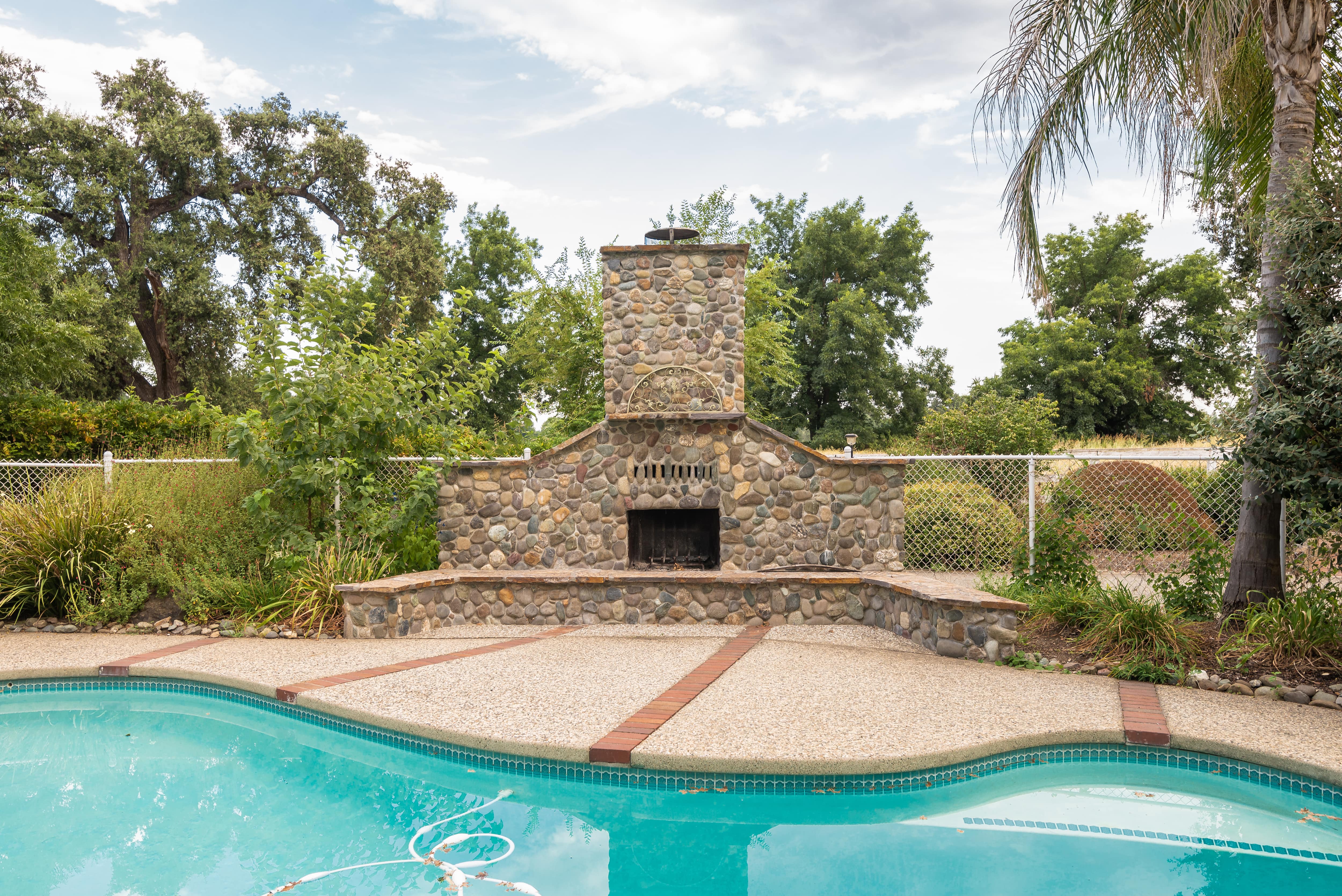
If you want a more permanent source of heat in your backyard, stone and concrete can be used to build a fireplace. This large outdoor fireplace resembles an indoor fireplace with a mantle and a tall chimney. The textured appearance adds visual depth by using different colored round stones. Add more seating by creating a built-in bench so you and your guests can wade in the pool and then dry off around the fire.

Pea gravel consists of small round stones, commonly used to cover large areas. If you have a swing set in your yard, enclose the space using pea gravel to provide shock absorption and keep dirt and mud away.

Large rocks can create a cascading waterfall, leading to a small pond in your backyard. This is a good way to make use of a slope or steep hill on your property while also serving as a decorative focal point.
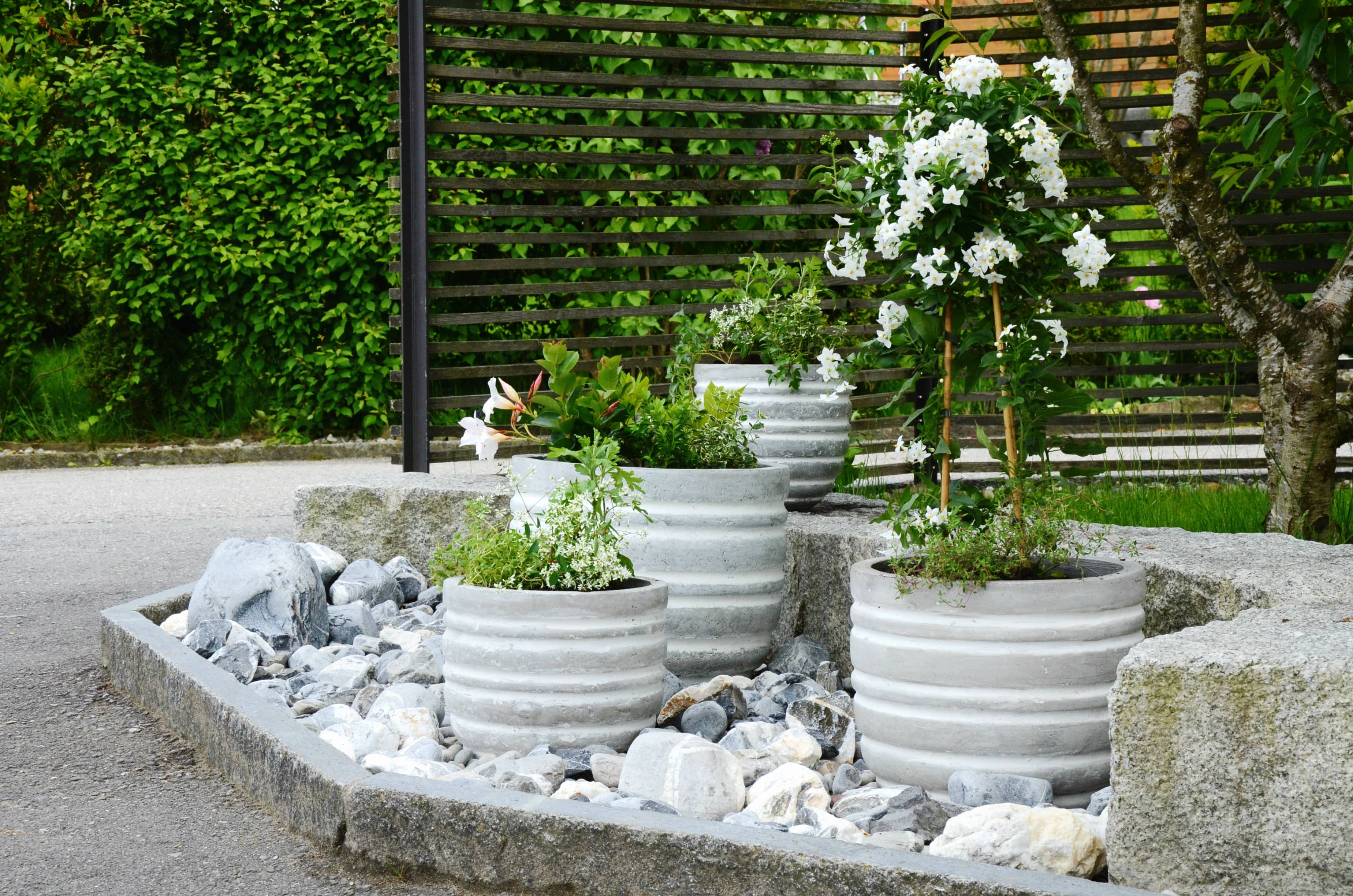
In addition to choosing the type of rocks you want to use, consider the colors as well. Bright white rock landscaping makes plants and greenery stand out while bringing a touch of sophistication. Put them in a shady area of your yard to add brightness and clean up edging and borders.
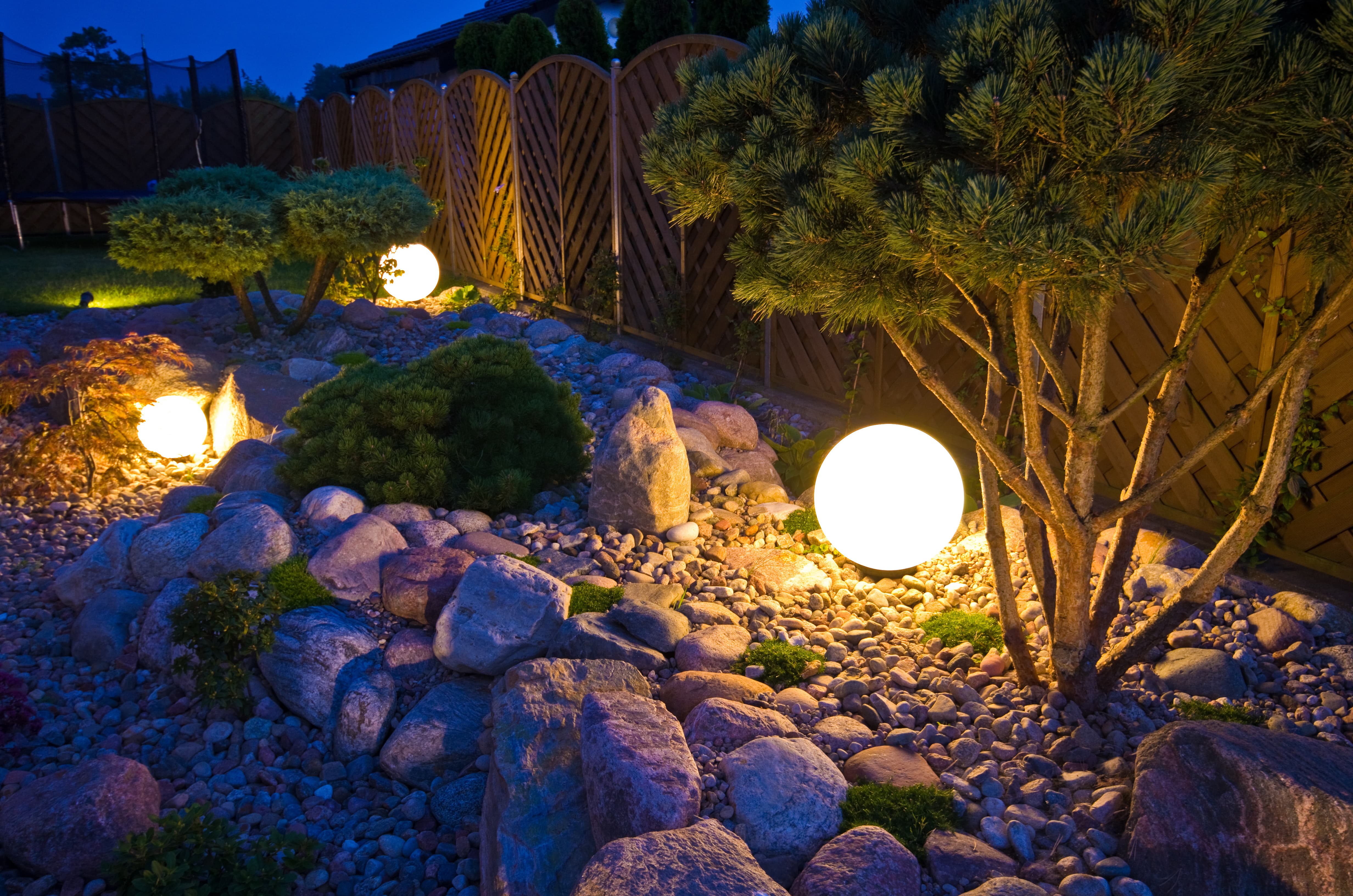
Make the rocks a focal point of your landscaping by adding lights so they can be seen, even at night. These globe lights work well amongst rocks because they mimic the shape of the stones, tying the exterior space together.

Create a border around trees in your yard by surrounding them with a square box made of wood. Fill it in with white rocks so the rich, textured bark stands out against the bright hardscaping. The weight of the rocks adds another layer of protection, so the tree is securely grounded from strong winds.
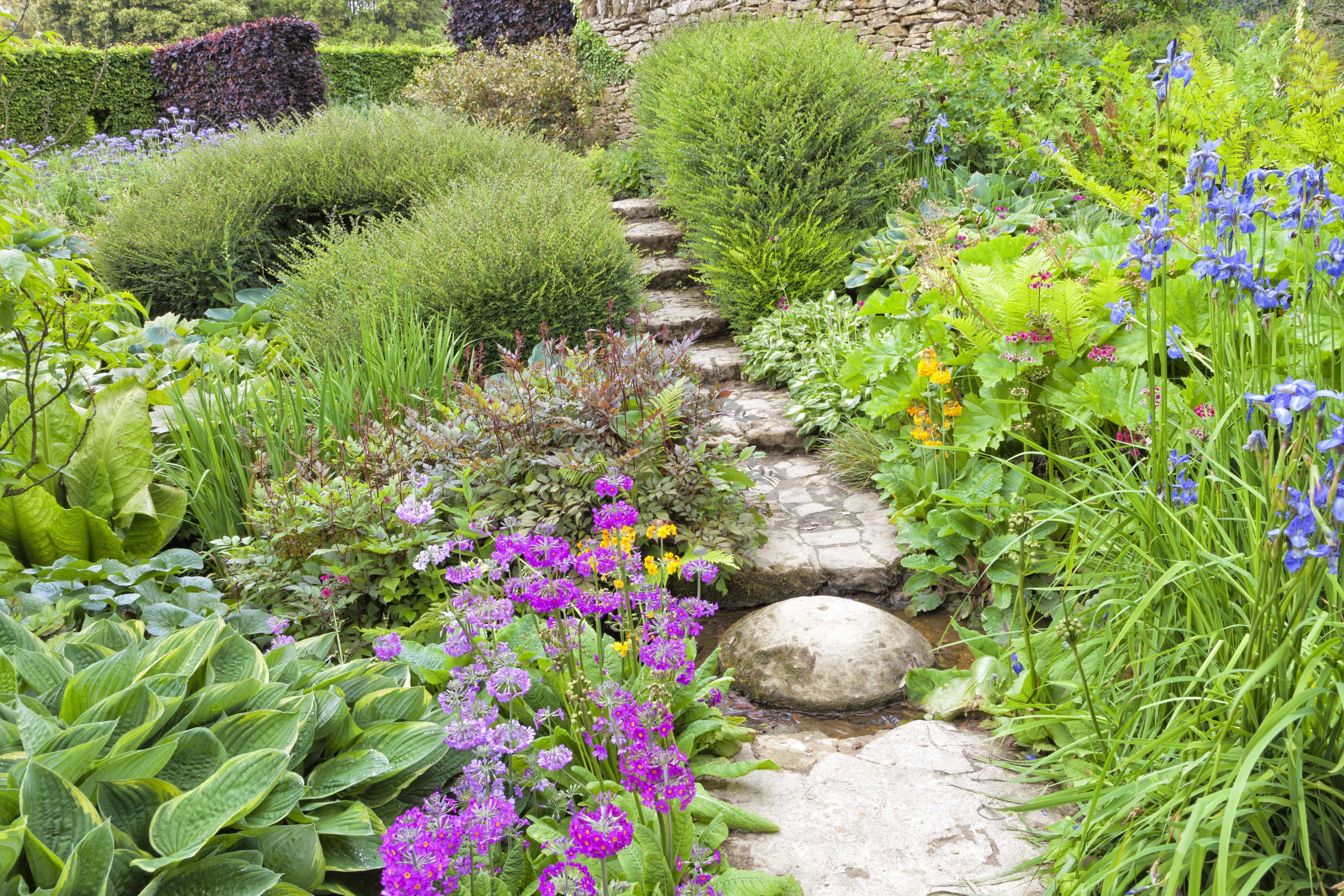
Use rocks to create a theme or enhance the aesthetic of your property. Traditional English cottage-style gardens feature lush plants and round rocks. Create a path using rounded stones and embrace overgrown shrubs to emulate the charm you would find roaming around the English countryside.
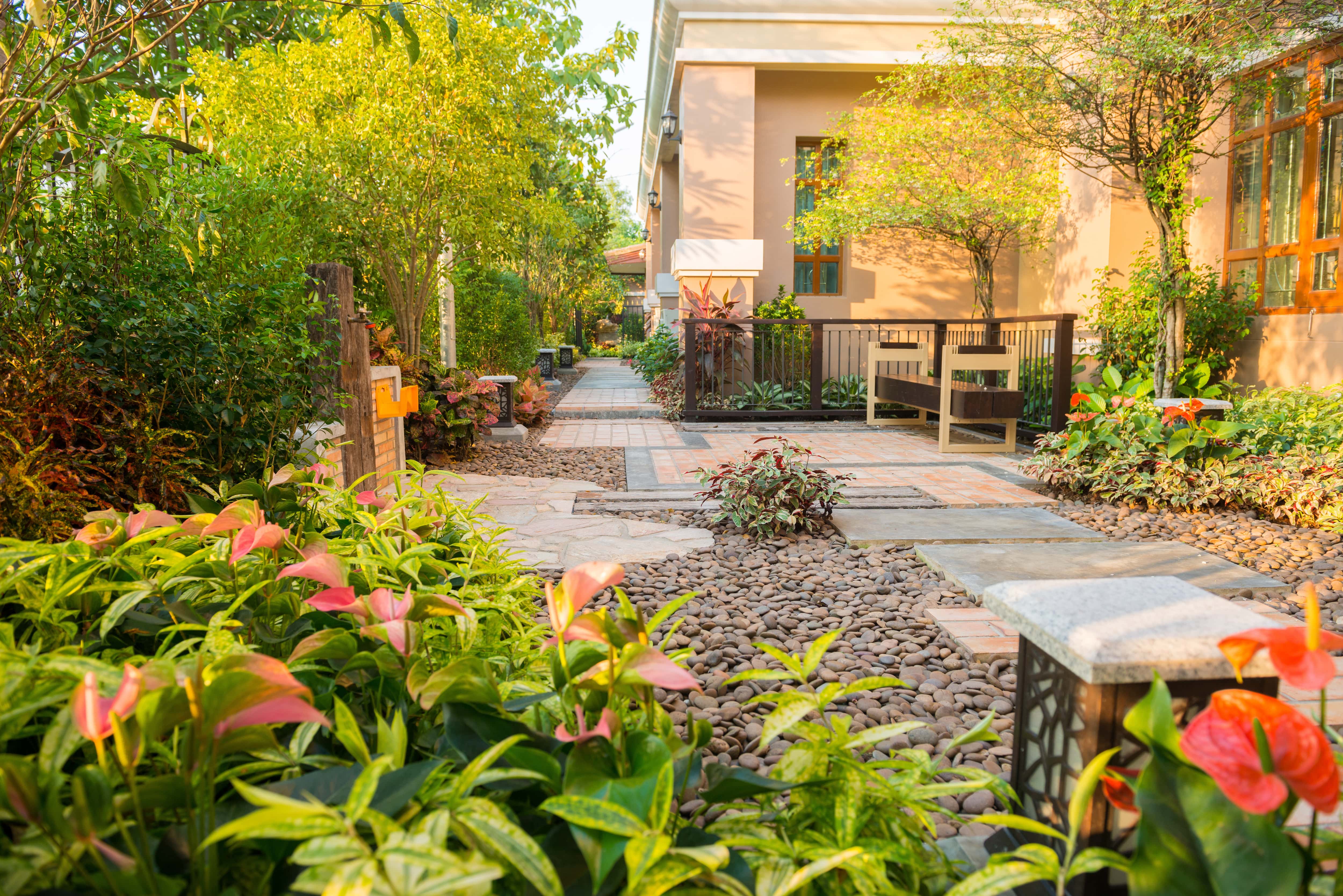
If you find the cottage style to be a bit too rustic, create a modern theme using rocks. Choose large geometric square stones to create a path leading to a contemporary bench. The clean lines of the stone walkway can complement modern styling.

These circular stepping stones create a charming walkway to lead you from place to place in your yard. Line the path with short green shrubs so the geometric pattern of the stones stands amongst the greenery.
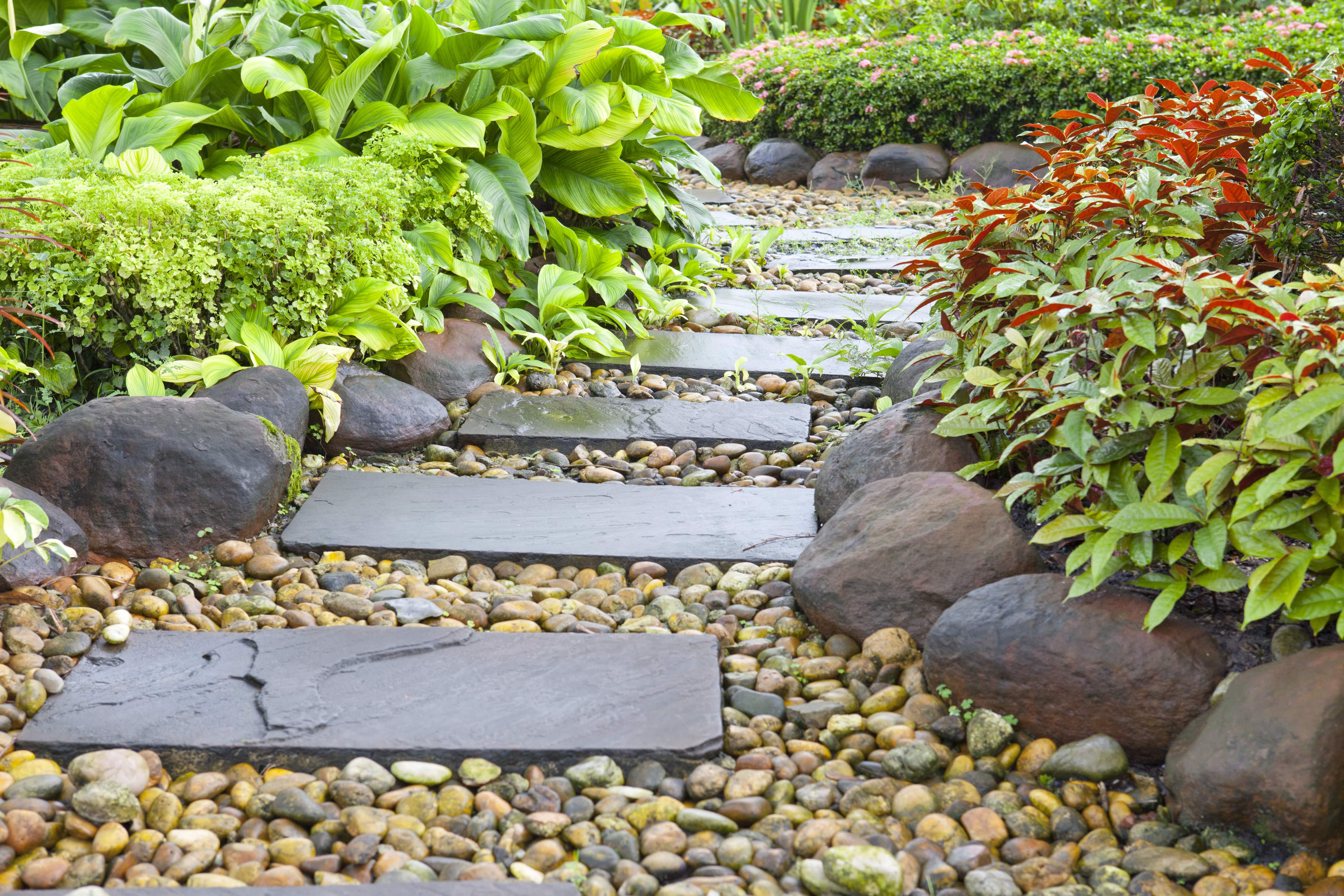
Mix different types of stones to construct a pathway in your yard. Use flat rectangular flagstones for the steps, and then surround them with river rocks. Large round rocks as an edging create a natural flower bed so you can line the walkway with your favorite wildflowers or shrubs.

Provide easy access to your plants by creating a relaxing walkway to mosey throughout your garden. Using crushed granite is a budget-friendly and straightforward way to cover a large surface area in your yard.
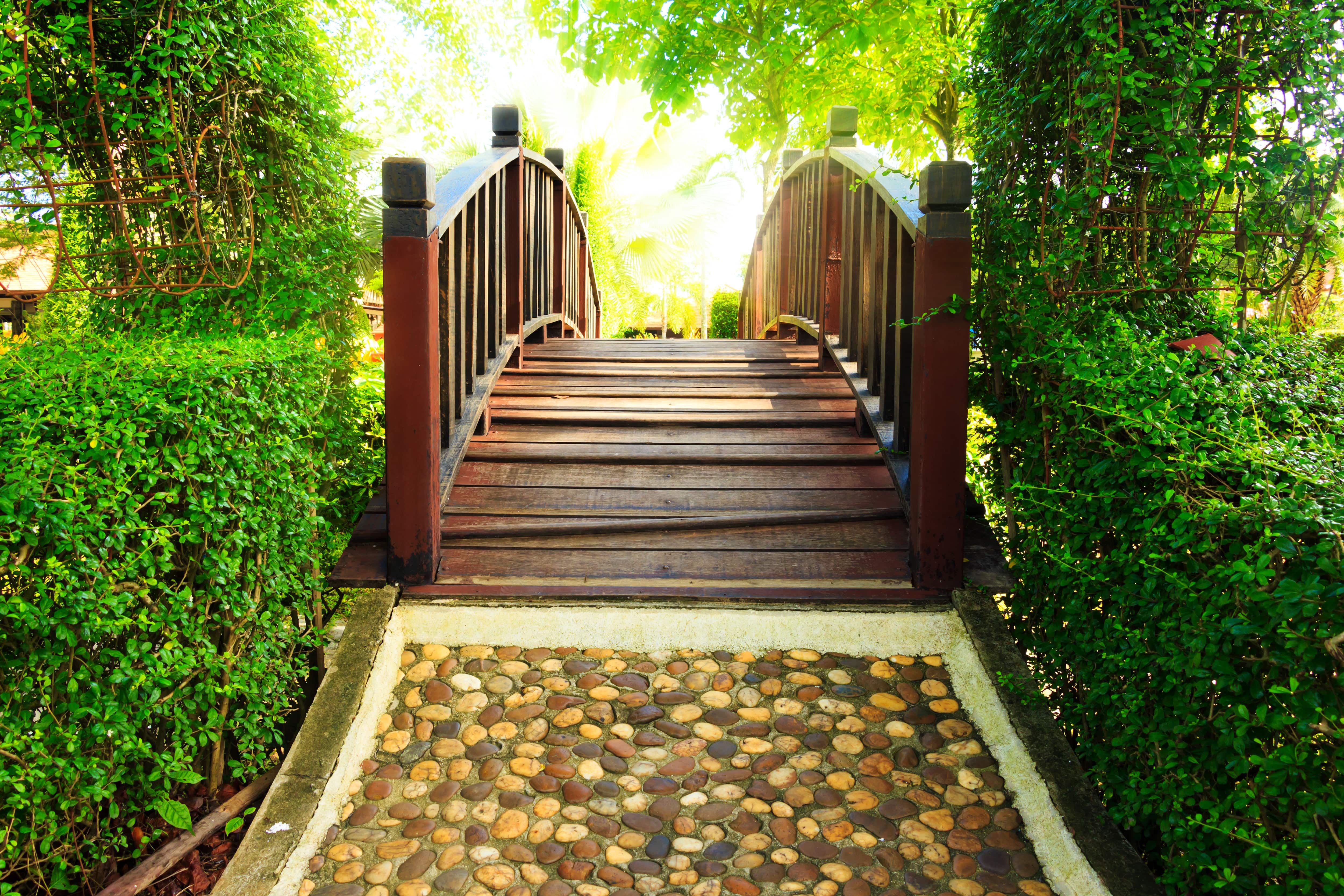
A wooden garden bridge can be used to enhance the overall look of your yard and also provide an easier way to cross over an uneven surface. Use small stones fused together with concrete to construct a pathway that adds elegance to your landscaping.
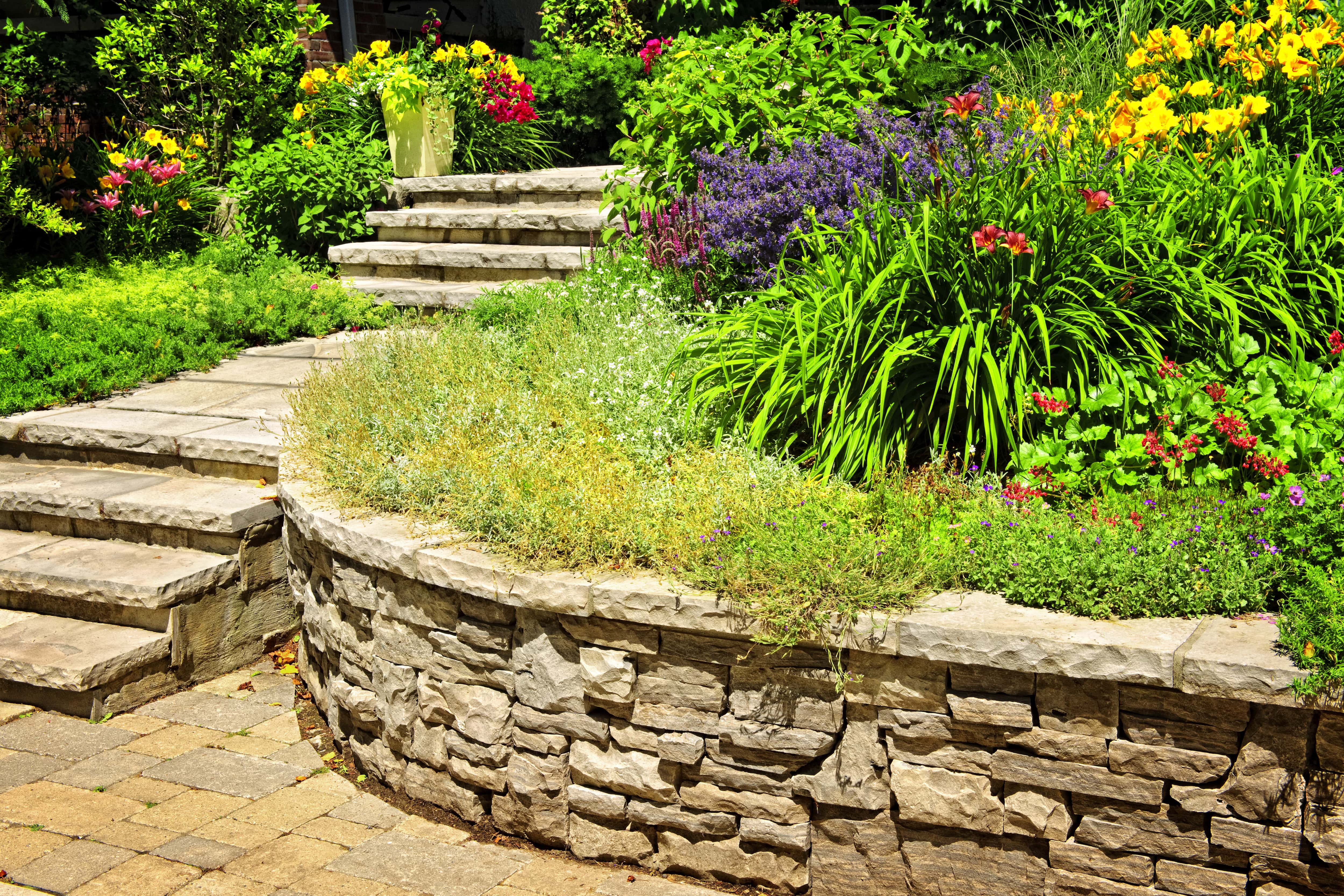
A retaining wall can be both decorative and functional, allowing you to make better use of a yard that is sloped. Natural rocks can be used as retaining wall material because they are sturdy enough to hold back the weight of the land behind the wall and also slow natural erosion. Plant lush greenery and flowering shrubs behind the rock wall for a multi-dimensional terraced effect in your yard.

If you have large boulders on your property, use them as part of your landscaping design to give them new life. You can use large stones as a natural border within your yard or as a way to delineate your property. Plant wildflowers that can grow in shady or sloping conditions to add a vibrancy you can see from a distance. If you’re unsure how to work in boulders with greenery, contact a landscape designer near you to help craft the garden of your dreams.

If you have an excess amount of loose rocks in your yard, use them to build a gabion wall on your property. A gabion wall is derived from the word “cage” in Italian and is used to hold in natural materials, creating a structure or wall. Compared to a retaining wall, some benefits to a gabion wall are that it’s easier to put together, requires almost no maintenance, and can be constructed in a short amount of time. Be sure to check with your county and town to ensure the rock installation is up to code.

Rather than having to evenly space out pavers to create a patio, use flat stones of various sizes instead. Arrange them to form a patio design, without the tedious process of laying even-sized bricks. Merge them together with concrete so you have a permanent and designated place to eat or just hang out.
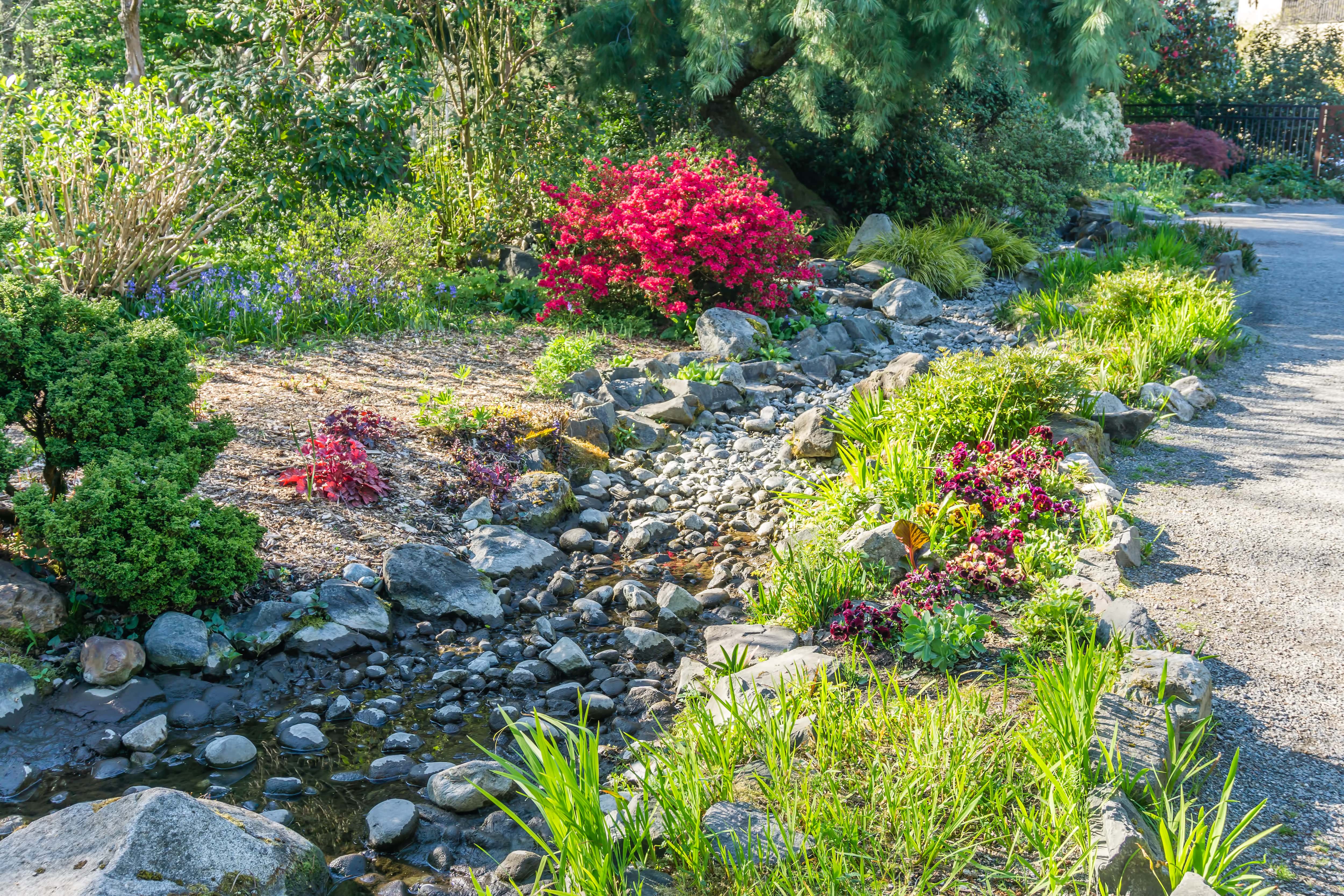
If you have wet areas in your yard, consider creating a dry creek bed to soak up some of the moisture. Dig out a trench, then fill it with river rocks so you don’t have to worry about muddy shoes when you’re trying to enjoy your backyard. Line the area with large rocks to mimic the look of a real stream twisting and turning throughout your property.

Install a stairway in your backyard to allow for easier access to higher levels of your property. Using rocks to create the staircase not only looks natural but is a sturdy and low-maintenance option. Remember, a landscape architect may be needed to ensure everything is safe and up to code.
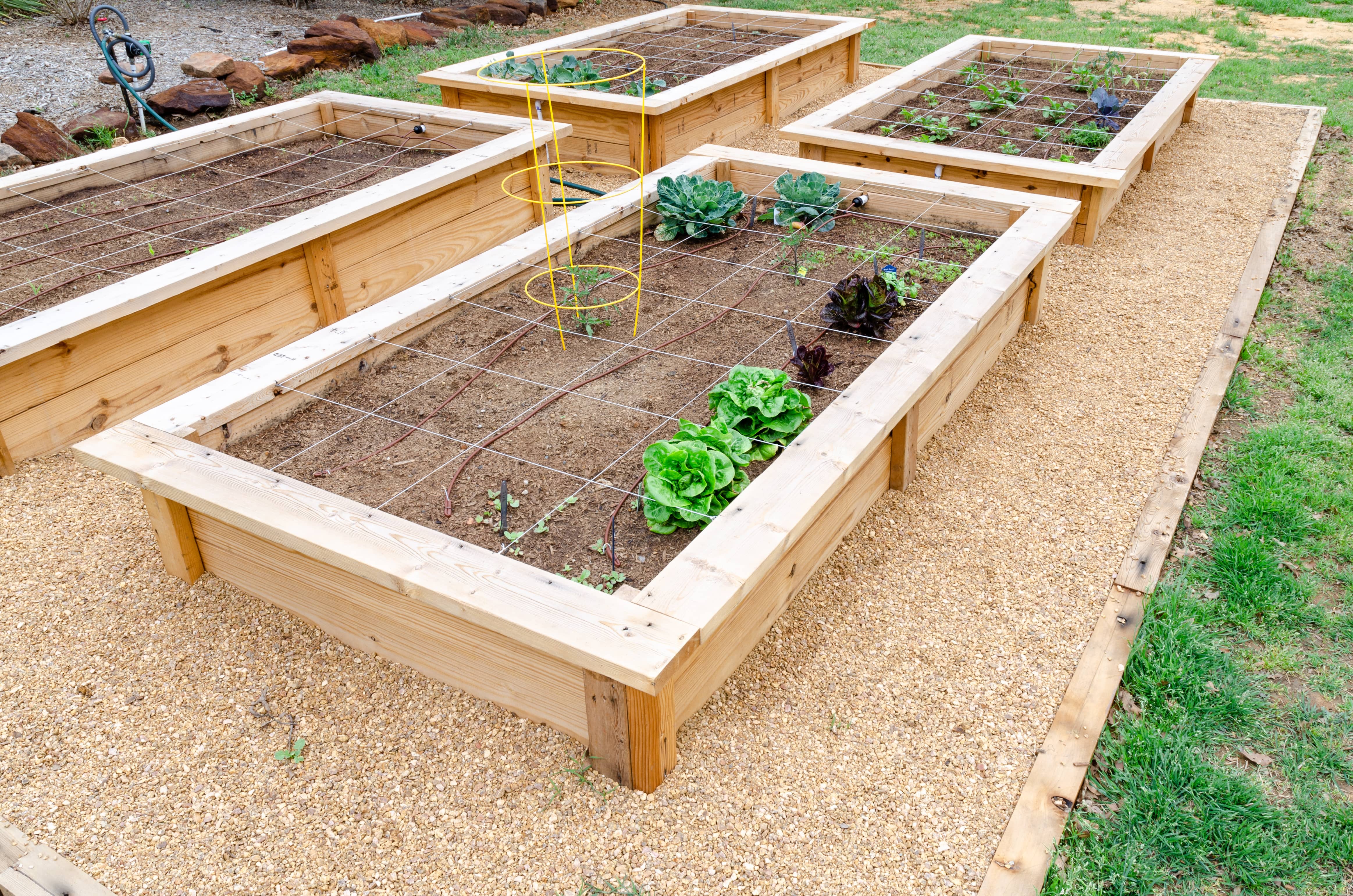
Enhance the look and functionality of your garden design by making paths around raised garden beds with stones. Crushed pea gravel promotes drainage, allowing your plants to thrive. Build up the area with strips of wood so the rocks don’t spill out onto your grass.

Natural rocks or flagstones can also be used to create a flower bed. Choose an assortment of large rocks and small rocks then stack them in a staggered pattern. Fill in the space with mulch and plant pansies and greenery to mix up the colors.

Using rocks combined with delicate wildflowers provides the perfect juxtaposition between hardscaping and softscaping. Choose flowers that can grow on hills and plant them surrounding large boulders to add a visual point of interest.
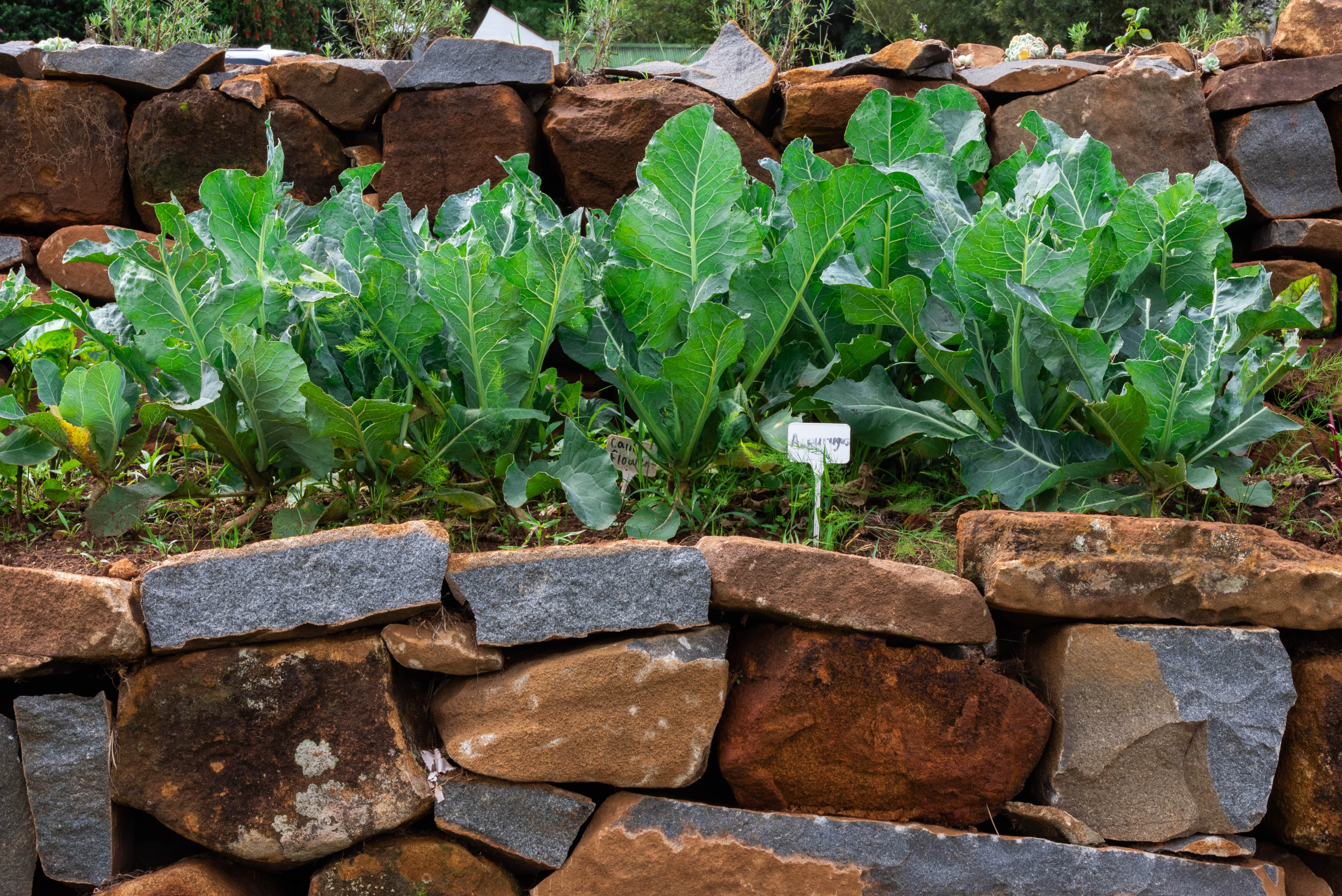
Use natural rocks to build a raised vegetable garden in your backyard. Veggies like cauliflower and asparagus, in particular, can benefit from this type of raised bed because the rocks provide good drainage. Place the vegetable garden near your grill so you can cook up some veggies when you’re dining alfresco on balmy summer nights.

Succulents are the perfect plant to use in a stone garden because the rocks promote an environment where succulents can thrive. Rocks provide the drainage needed for succulents to grow and flourish and radiate heat for their needed conditions. Moreover, succulents provide pops of greens and pinks and are a low-maintenance plant you can enjoy throughout the year.

A rock garden is a popular landscaping idea that adds visual appeal and requires less maintenance than a flower garden. Choose larger stones as a border, then fill in with grey and white rocks to add dimension. Plant hearty shrubs and ferns that require little water for an eco-friendly option you can enjoy the look of (without added work).
Rocks are low-maintenance and don’t need to be replaced like wood chips or mowed like grass.
They are a longer-lasting alternative to mulch.
You can find many different colors, shapes, textures, and styles of rocks to create the look you’re seeking.
Rocks promote drainage and can protect your yard from wet spots or water damage.
Compared to organic materials, like mulch, rocks don’t attract termites, ticks, or other insects that are drawn to the decomposing matter.
Any time water pools and collects you risk drowning your plants or, even worse, fungus growth. Fungus loves to grow in wet areas. If it doesn’t dry it can kill your plants, grass, and the surrounding yard.
While many landscaping rock projects can be weekend DIY jobs, projects involving excavation, grading, large rocks, or construction might require a pro’s expertise. For larger projects or anything that needs to follow local building codes, enlist the help of a local landscape designer to ensure the job goes smoothly and safely.
Window Depot did an amazing job on my deck. I wasnt sure what I wanted to do, but their composite decking was affordable and will last a long time. I am excited to have family over, and I am no longer embarrassed by my backyard. Jeff and the ground crew were polite, respectful, and caring for...
We had a 20+ year old landscape lighting system that needed replacement. Midwest Lightscapes worked with us to design a much improved lighting system, lighting the exterior of the house and the back yard. Installation of the 45 light system took one and one-half days, and went very smoothly....
We used Unique Hardwood Floor LLC three years ago to work on the floors of a 70 year old home that needed a great deal of work. Some floors needed repairs, some were replaced and others just needed to be refinished. It was a complicated job as they needed to blend the old and the new to...
Phil and his team did a great job. He listened to our needs and took care of everything. The team was polite and answered our questions along the way. They were flexible to last-minute requests. Our new patio looks beautiful. I would use Garden of Eden Landscaping again, and highly recommend...
Norman responded to the voicemail that I left describing the situation within an hour of having left it. He was already on a job in our area and offered to come over the same day to assess the situation and give an estimate. Once he saw what we needed we set up a time 3 days later for him and...
They have been great to work with. Luke Henry, the Proscape owner is always accessible and responsive to our needs. He has met us at our property several times to discuss ideas to improve our landscape. His crews show up as planned and we are very pleased with their work. We will continue our...
From start to finish this company amazed us. After three long years of quote after quote we found who we were looking for right around the corner from us. We had a detached 2 car garage that was going unused becuase the driveway that had been there when the house was built in 1959 had long...
I've been using Landscape Direct for 17 years. Brad is very knowledgeable and has designed and planted beautiful flower beds for me. He also does weekly mowing service at a very reasonable price. One of the bright spots following a snow storm is hearing Brad arrive to plow the drive and...
All around they have done a really great job. I have used JL Landscapes for the past 8 years. I own and operate my own commercial/residential real estate company where we own, operate, and maintain our own properties. JL Landscapes has been our exclusive landscaper for both our business...
The worker came out when he was supposed to come. He informed me he would honor the Angie's List deal, but would not do any more work for me since my son in law owns lawn care company as well, even though they do not do the same type of work. He said he did not feel comfortable giving me...
From average costs to expert advice, get all the answers you need to get your job done.

Landscape curbing can really improve the look of a yard, but at what cost? Find out how much it costs and the different ways you can do it

How much does hardscaping cost project by project? Check out our breakdown for every price tag you need to know, from outdoor fireplaces to patios.

Leveling your yard can help with drainage and prevent damage to your home. Learn the cost to level a yard in Columbus, OH, and what factors can affect the price.

Hiring a pro isn’t necessary when removing holly bushes. This guide can help you make quick work of the holly bush removal process.

The cost of topsoil varies based on the size of the area and the depth, as well as prep and labor. This article covers everything to factor into your budget.

Wondering when the best time to regrade your yard is? Learn why fall is ideal and what factors you should consider that affect your specific timeline.